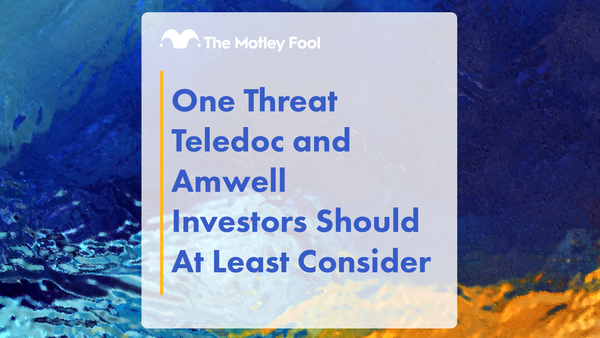It's no longer enough to evaluate Allergan's (NYSE: AGN) earnings on a stand-alone basis; almost everything that happens with or to Allergan these days is going to be viewed through the lens of how it impacts Valeant's (VRX +0.29%) hostile bid for the company and Allergan's efforts to resist that bid. Although Allergan's recent R&D update was not uniformly positive, today's earnings and guidance do serve to raise the stakes a bit, and Valeant's recent complaints to regulators tell me that Allergan has scored a few hits with its own PR program.
Strong earnings make a strong case
Key to Allergan's strategy to stay independent is convincing investors that it can deliver strong results all on its own. Monday's reported earnings do help serve those ends.
Revenue rose 16% in the second quarter, coming in about 5% higher than expected with no major weak spots. Eyecare revenue rose 14% on 24% growth in Restasis and 11% growth in Lumigan, while Botox sales rose 13%. Skin care was up 7% despite a 9% decline in Latisse, while breast and facial aesthetics sales were up 3% and 46%, respectively.
Allergan improved these results further through better expense management. Gross margin improved more than half a point from last year and beat the average estimate by more than a quarter-point. Operating income rose 25%, beating expectations by almost 7% on a nearly three-point improvement in margins.
Doing some of Valeant's work themselves
Slash-and-burn cost cutting is often a part of synergy generation in M&A transactions and Valeant has a well-earned reputation for significantly paring away costs from those companies it acquires. Allergan isn't completely refuting the idea that there's fat to trim and management unveiled a new $475 million cost-cutting program that will including reducing the workforce by 13%. Allergan took pains to note that only a small percentage of these cuts would come from customer-facing positions.
With these moves, management put out a target of $10 per share in earnings for 2016. As the prior average Street estimate for earnings was $8.20, that's a major upgrade in expectations. Comparing that figure to my own model, I think management is going to have to do more than $475 million in cost cutting to reach $10/share, though more aggressive share buybacks and/or better sales growth from existing/pipeline products could fill some of that gap.
Doth Valeant protest too much?
I found it a little interesting that Valeant announced today that it was formally complaining to regulators in the U.S. and Canada about false statements made by Allergan about Valeant's financial performance. In particular, this latest kerfuffle seems to center around allegations from Allergan that Bosch & Lomb's performance has been weak under Valeant's ownership and notably weaker than what Valeant has reported.
Given the mud that Valeant has flung at Allergan, I'm tempted to say that Valeant's protest is on a level akin to a schoolyard bully running to the teacher when a would-be victim pops him in the nose. That said, anybody who has written for an Internet audience knows what it is to have false statements made about you (it's not fun), and I can understand why Valeant would react this way.
I would also note that Valeant still has its work cut out. Valeant and Pershing Square are trying to solicit enough votes (25%) to call a special shareholder meeting. Seeing as how Pershing Square already started off around 10%, I have to wonder how much underlying enthusiasm there is for this deal.
R&D updates only help a little
About a month ago Allergan gave an update regarding four of its R&D programs. The best news was probably the announcement that Ozurdex was approved for diabetic macular edema. The worst was arguably that the company received its third FDA rejection on Semprana (previously known as Levadex). The FDA cited issues with content uniformity and standards on device actuation and the company believes there is a possibility of approval around mid-2015.
On the more equivocal side, the company announced encouraging progress with bimatoprost, a sustained release drug for glaucoma that could address meaningful compliance issues in this condition. While this looks like a promising drug, the revenue potential is probably on the order of $200 million a year.
Most equivocal of all was the progress of DARPin, a controversial drug for wet AMD. Efficacy data on DARPin have been mixed, showing similar efficacy to Regeneron's Eylea and slightly better efficacy to Lucentis. The keys here are whether Allergan has adequately addressed issues related to inflammation and whether the drug will show improved duration, allowing for less frequent dosing and commercial differentiation. Although this drug could be worth $500 million in revenue (and perhaps more in combination with an anti-PDGF compound), the fact that the Phase III trial is being designed as a head-to-head study against Lucentis rather than Elyea is less encouraging.
The bottom line
What happens now? Allergan may be hoping that it can wait out Valeant; if Allergan can stall long enough for interest rates to rise, the debt Valeant needs may get too expensive to make the deal worthwhile. Alternatively, Allergan is likely still looking for an accretive acquisition (particularly one that would facilitate a tax inversion) to boost its value case. Shire could still be a target, but it would be a tough argument for Allergan to sell to Shire's shareholders, even if the combination would have superior growth potential to the AbbVie-Shire combo announced last week.
It's all but impossible to evaluated Allergan outside the context of M&A today. Clearly management wishes to sell a vision that Allergan can support this price and more on its own, though I think an inability to find an acquisition target and the loss of Valeant's interest would be bad for the stock in the short term. Valeant has set a challenging bar to beat, so Allergan still has a lot of work to do to convince the Street that going its own way is the right path forward.





